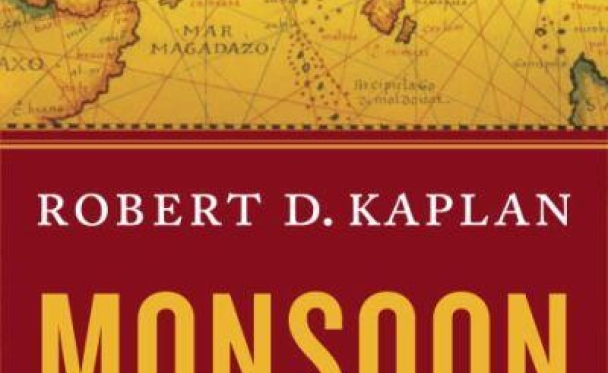
MONSOON: THE INDIAN OCEAN AND THE FUTURE OF AMERICAN POWER
Reviewed By:
Let’s begin with a quiz. What and where is Gwadar? Few people can answer that today, but some in the know believe that within 20 years, it will become the next Dubai.
For many years, Gwadar had been just another South Asian fishing village. It sits on a hammer-shaped peninsula jutting from southwest Pakistan into the Indian Ocean at one of the world’s most strategic spots. The Chinese have built a deepwater port there, ready for jumbo oil tankers and cargo ships. Plans for resort hotels have been drawn up. Gwadar, writes Robert Kaplan, is “a place of wonders, slipping through an hourglass.”
Few books can be considered indispensable, but Monsoon is one of them. Journalist Kaplan is one of the world’s foremost analysts of geopolitical change (and the conflicts that often result). His thesis in this volume is, “Europe defined the 20th century; the Indian Ocean will define the 21st.” The case he presents is compelling, and anyone contemplating the future of global power relationships needs to understand how and why these changes are occurring.
Kaplan offers some basic facts: Countries surrounding the Indian Ocean account for a third of the world’s population, and this rimland generates 70 percent of the traffic of petroleum products for the entire world. The potential for vast economic development exists.
But nothing is certain. Concerning Gwadar, governance is a relative term in Pakistan, and the port’s potential might fizzle in a mess of incompetence and corruption. Furthermore, the climb to prosperity will be steep. In one of the region’s principal cities, Kolkata (formerly Calcutta), India, the impoverishment of millions is always on view. As Kaplan notes, “Poverty is not exotic, it has no saving graces, it is just awful.”
Dominating the region’s future is competition between India and China. Indian Prime Minister Manmohan Singh characterizes this and other regional relationships as “mutual dependencies for mutual benefit.” If all this remains peaceful, fine, but religious tensions smolder within the region, and both India and China are building up their navies, something the United States watches warily. For U.S. military planners, priorities are changing enormously. The American “two-ocean navy” has long patrolled the Pacific and Atlantic. Now, the two oceans of concern are the Pacific and the Indian.
So far, rivalries have been mainly economic and political, and the game is played according to local rules. China hungrily eyes Burma’s resources and makes deals to get them. As Kaplan points out, “China is not like the United States, whose leaders, both Democrat and Republican, seek the moral improvement of the world as a basis of foreign policy.” China has also constructed another major port in Hambantota, Sri Lanka, which, like Gwadar, is little-known but strategically located. This venture, with an oil refinery and flow-through facilities for Chinese goods, Kaplan writes, is “emblematic of China’s budding yet exquisitely elusive empire, built on soft power.”
Places that were once merely exotic are now important. Asian and African countries on the Indian Ocean are entering the next stages of their histories and are reshaping how the world works. In Monsoon, Kaplan vividly describes this transformation and provides an essential primer for this new century’s evolving politics.
This book review was originally published in The Dallas Morning News.
Monsoon: The Indian Ocean and the Future of American Power
Robert Kaplan
Random House, October 2010
ISBN-10: 1400067464
ISBN-13: 978-1400067466
384 pages
-
Jan 3Los Angeles Times
-
Jan 2Huffington Post
-
Jan 2The New York Times
-
Dec 10The Washington Post
-
Dec 9The Washington Post
Most Popular Blogs
-
November 13
-
December 17
-
November 25
-
January 2
-
January 2







